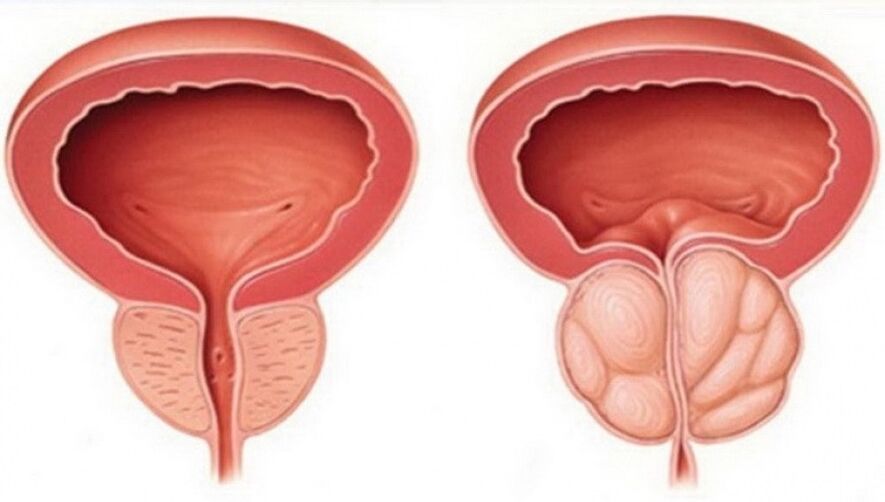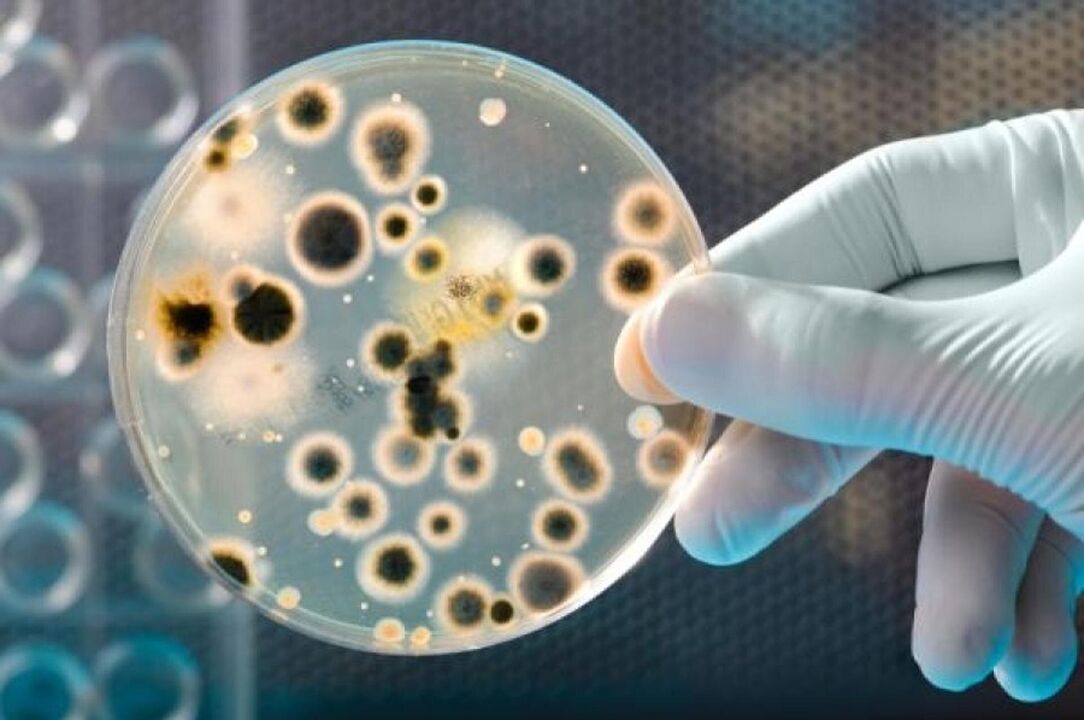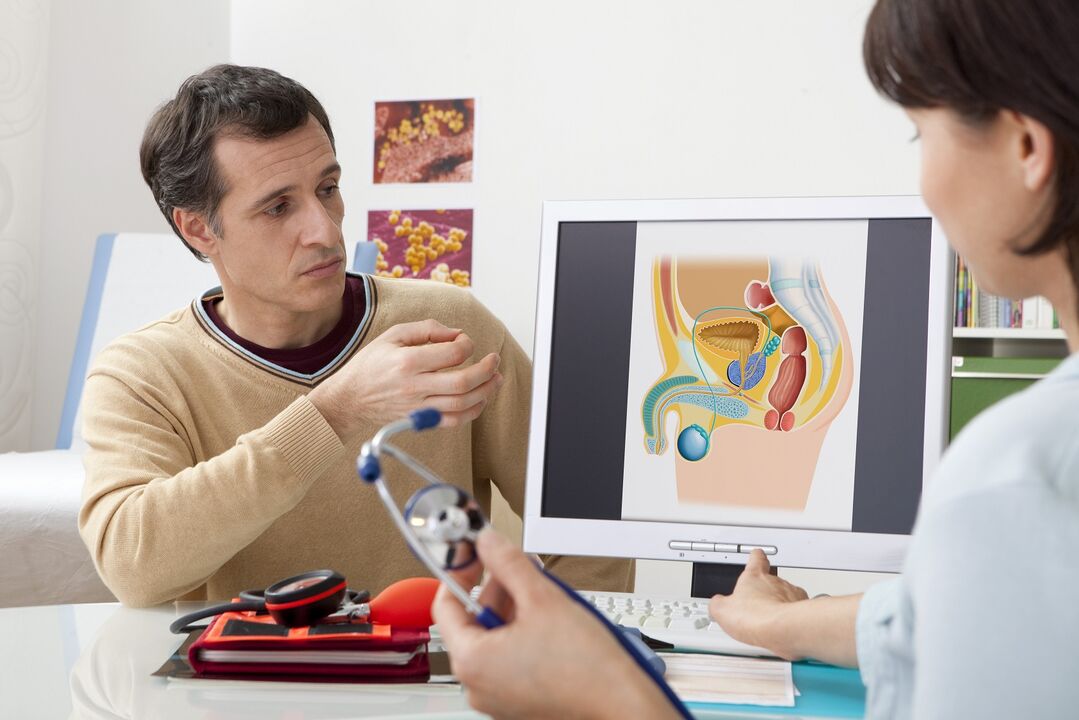According to BME, prostatitis is an inflammatory process that occurs in the prostate gland in men with damage to the parenchyma and interstitium. Treatment of prostatitis in men is a long and difficult event, most often due to complete ignorance of the disease at the very beginning. What is prostatitis, what are their causes and the first signs, what you need to know about the subject of "diagnosis" and what modern methods of treating prostatitis exist. All men should know about prostatitis in this review article.

Ab ovo - from the egg
We are not talking about Horace's satyrs, in this case we are interested in everything related to prostatitis, from the very beginning to the last "squeak" of the treatment. Symptoms of prostatitis are found in men during the period of active sexual activity, from 25 to 45 years, on a thematic video you can study in detail everything about the basis of the disease, its causes and symptoms, the peculiarities of diagnosis and treatment.
There are many reasons for the development of prostatitis. With prostatitis, infectious factors have the greatest weight in the development of the disease:
- Acute form. The coccal flora acts as a provocative motif.
- Chronic form. The reasons for its development are more extensive, since the main factors of such prostatitis in humans are: gonococci, Trichomonas, Gr + and Gr bacteria, mycobacterium tuberculosis. In rare cases, the diagnosis reveals mycoplasmas, viruses, fungi, chlamydia, etc.
It is worth noting that chronic prostatitis, caused by a pathogen that entered the prostate, may later have a pathogenic factor and be abacterial in nature. The acute form is more often provoked by external causes: hypothermia, trauma to the urethra or damage to the bladder as a result of endoscopic examinations or various manipulations, hypodynamia and, as a result, violation of blood and lymphatic circulation inthe pelvis (congestive prostatitis), hormonal or autoimmune disorders.

Often you can only hear about one type of prostatitis - infectious, however, according to the WHO, bacterial prostatitis accounts for no more than 10% of all cases of the disease, while chronic abacterial prostatitis isrecorded in 90% of cases.
Table n ° 1. Brief characteristics of the pathology
| Categories for prostatitis | Acute infection | The presence of the pathogen in the secret of the prostate or the 3rd portion of urine | The level (increase) of leukocytes with m / s secretion or urine |
| 1 cat. Acute bacterial | + | + | + |
| 2 cat. Chronic bacterial | - | + | Not sure (whether or not) |
| 3 a. Chronic pelvic pain syndrome of inflammatory nature, non-bacterial | - | - | + |
| 3 b. Prostatodynia, non-inflammatory pelvic pain syndrome | - | - | - |
| 4 cat. Asymptomatic inflammatory process | - | Not sure (yes or no) | Not sure (yes or no) |
The etiology of bacterial prostatitis in acute and chronic manifestations has been studied in more detail, in most cases, bacteria of the family become the cause of the disease. Enterobacteriaceae (bacillus E. coli). The role of atypical microorganisms as a cause of prostatitis (ureplasm, chlamydia, mycoplasma) is currently considered not to be fully proven. Symptoms of prostatitis in men with signs of weakened immunity, especially with HIV, may be caused by yeast (Candida spp. ) Or by Mycobacterium tuberculosis.
Before the advent of the era of antibiotics, the gonococcal flora (Neisseria gonorrhoeae) played an important role in the development of prostatitis, especially as it became the cause of its abscess form.
The causes of the abacterial form of prostatitis have not been fully investigated, although urologists have thoroughly studied the list of possible pathogenic factors (provoking prostatitis) that play an important role in the appearance of inflammation. prostate without the presence of microorganisms. So, at the heart of the causes of non-bacterial prostatitis are stagnant processes in the small pelvis, circulatory disorders, intraprostatic reflux of urine and an autoimmune aseptic inflammatory process.
Sick or not, that is the question
What does a man with prostatitis look like? For a person far removed from medicine, and a fortiori little versed in urology problems, the masculine appearance of an individual is no different from the crowd of others. And only an experienced specialist, from the first complaints of the patient, will understand where the root of the problem has ripened and how to eliminate it.

Symptoms of prostatitis are often described in several sentences, highlighting the brightest moments, and it plays a cruel joke with a man. Relying on such imprecise definitions, he ignores the really important bells, believing that the disease does not exist, although in fact the clinical picture depends on the nature of the morphological changes in the prostate.
The first symptoms can be attributed to the following types of prostatitis:
- Catarrhal prostatitis. Dull pain in the perineum, radiating to the sacrum, frequent nocturnal impulses.
- Follicular prostatitis. Difficulty and frequent urination, sometimes with delay. Pain in "pee", worse at the end of the urination process, as well as stool. Mild fever.
- Parenchymal prostatitis. There are symptoms of pronounced dysuria, often AUR, pain during natural recovery, general intoxication with a temperature of up to 40 ° C.
In case of prostatitis with abscess formation, the symptoms are clearer with the possible opening of the abscess in the rectum or in the prostatic part of the urethra. With such a breakthrough, the symptoms disappear. If the opening of an abscess occurs in the paraprostatic tissue or in the perineal region, visual symptoms may be observed: swelling, redness of the skin with pronounced fluctuation. At the same time, the condition of man is deteriorating sharply.
Comprehensive treatment of prostatitis cannot be initiated without a thorough examination of the man, diagnosis and analysis of symptoms that can directly indicate the type of disease.
In general, it is customary to distinguish between acute and chronic course of prostatitis; on a thematic video on the Internet you can find out in detail which symptoms refer to one form or another. Let us examine this question in more detail.
Acute - its typical symptoms are characterized by the manifestation of three stages: catarrhal, follicular and parenchymal. They are described in detail above.

The most interesting in terms of symptoms is the chronic form of prostatitis, as there are many variations in the symptoms. In general, the effective treatment of prostatitis depends on the prostatitis, or rather its type.
At the stage of chronization, the following moments are distinguished:
- Chronic prostatitis is rarely the result of an acute process.
- Primary prostatitis goes away with cleared symptoms.
- A characteristic symptom of chronicity is weak discharge from the urethra during bowel movements.
- As a rule, the first symptoms are not expressed, the pathological process itself develops over the years. It is preceded by prostatosis (congestion of the capillaries), which gently transforms into an abacterial form of inflammation of the prostate.
- The specific pathogenic microflora is not the cause of chronic prostatitis, but the chronic process itself is a complication of the inflammatory process due to the effects of ureaplasma, Trichomonas, chlamydia and gonococcus.
How does a man with chronic prostatitis feel? Reviews of patients show that most often at first, minor pain in the perineum is felt, scant discharge, which most men simply do not pay attention to. The next stage is the meeting of the following symptoms: burning sensation in the urethra, sexual dysuria, general malaise. Frequent misfires during sex make men depressed, irritable, or depressed.
It is important to understand that all these signs do not necessarily appear in each specific case of chronicity, this is what complicates the diagnosis at an early stage of the disease, moreover, the symptoms tend to change places, thiswhich is even more misleading.
Long term syndromes
What can you expect from chronic prostatitis? If there is no timely diagnosis and treatment - nothing good, any specialist will confirm this. This type of prostatitis is characterized by 3 syndromes:
Pain
The prostate itself does not hurt, but there are many nerve endings passing through it and being nearby, which inevitably become involved in the inflammatory process. The pain can be of different intensity - from a slight pain, creating discomfort, to a strong one, not allowing you to sleep peacefully. Irradiation of pain occurs in all neighboring areas (scrotum, sacrum, perineum), the pain of prostatitis should be differentiated from similar symptoms of other diseases.

Dysuria
Dysuric syndrome always indicates a dysfunction of the urinary system, but its cause is revealed during the diagnosis. The enlargement of the prostate inevitably compresses the urethra, and the outflow of urine is disturbed, followed by the development of a frequent urge to go to the toilet, a feeling of incomplete emptying of the bladder. With advanced prostatitis, there is a compensatory hypertrophy of the muscle layer of the bladder and ureters. At this point, the symptoms of dysuria subside, but return again in an intensified form.
Sex without pleasure
A declining intimate life - these are the first symptoms that men notice and it is they, as reviews show, that compel them to see a doctor. Frequent nocturnal erections, erased orgasm, bad erection and rapid ejaculation, pain during it - this is what worries the stronger sex the most. In the advanced stage of chronicity, nothing good can be expected from prostatitis; erectile dysfunction often develops.
The degree of sexual disorder in men is not the same, someone begins intercourse and somehow ends it, sweeping the characteristic bells. For some, even the penis' initial weak response to a charming stimulus becomes a collapse and the start of strange experiences that turn into prolonged depression. The spectrum of impotence is difficult for patients with prostate problems, almost always experts and relatives notice that prostatitis spoils the character.
To learn more about the disease, you can study a thematic video, where experts explain many nuances of the pathology.
What to write on the card
Which record will appear in the patient's medical record and which final diagnosis will be made depends on a series of primary studies, from the patient's arrival at the urologist and their complaints (history) to the very last step of the measurementsdiagnostics. What exactly is required depends on the type of prostatitis, its negligence, and the patient's consent to specific diagnostic procedures.
In general, the diagnosis consists of:
- History. The doctor will ask you in detail all the complaints and symptoms, the prerequisites of the disease, etc.
- Urine analysis.
- Prostate massage (rectal examination + collection of secretions).
- Prostate ultrasound.
- Spermograms.
- Prostate biopsy (if indicated).
What does the diagnosis give and is it so important? If you read patient reviews, you can often understand that there are many stages in the diagnosis that most men try to avoid when the motivations are very different. The price of such indifference is your own health! It is important to remember that prostatitis is only curable if it is "caught" on time and the diagnosis is made accurately with a definition of the form of the disease and its cause.
How to be healthy forever
So, the man understands that he has prostatitis, what awaits him in the future and is it possible to regain the lost health? It is important to understand that you will have to get rid of prostatitis twice as long as it has developed. In addition, if the pathological process almost exceeds the attention of a man, then the treatment of prostatitis will take place with his direct participation. Whether acute or chronic prostatitis can be cured - yes, if you follow all the recommendations of the doctor, in advanced cases of the chronic form, during treatment it is possible to achieve stable remission.

The stages of treatment for prostatitis will directly depend on what the doctor finally found during the examination, the type of disease, the age of the patient and the physical data.
The treatment regimen is always strictly individual, but the following points may appear in it:
- Antibacterial therapy.
- Physiotherapy methods.
- Phytotherapy.
- Appointment of immunocorrectors.
- Urological massage.
- Physiotherapy.
The price for each stage of treatment is different, depending on the total cost of prescribed drugs, additional methods and the clinic. Preventive measures following treatment have an important justification - they prevent the return of the disease. Prevention has direct and close contact with treatment, the basics of prevention are just as important as meeting all of the doctor's requirements during therapy.
Treatment of the acute form
The period of exacerbation requires taking antibiotics, to drink as a cure. In the presence of chlamydial infection, drugs of the cephalosporin series are indicated.
The duration of the course is large, on average, antibiotics are drunk for at least 3-4 weeks to prevent a relapse of the disease. Sometimes the doctor continues the treatment longer, antibiotics are combined with pain relievers to relieve the pain.
Treatment with antibiotics is carried out taking into account the following rules:
- A bacterial culture is needed to determine the sensitivity of microorganisms to the drug.
- The side effects and contraindications of drugs are taken into account.
- They take into account the previous treatment, when it took place, the means used and the result.
The need for additional treatment methods is determined by the attending physician, it should be remembered that massage is contraindicated in the acute form of prostatitis, since it provokes the spread of bacterial infection throughout the body, followed by'bacteremia and sepsis.

Treatment of the chronic form
It is important to remember that it is impossible to quickly get rid of chronicity, in principle, the disease has developed over the years, and it is beyond the power of even doctors in their field to destroy it bya few weeks, you don't have to take the word of those who cured the disease in 2-3 days. Treatment is aimed at stopping the focus of infection, restoring immunity in men and the work of the prostate, as well as preventing exacerbation - it takes time.
The course of antibiotic therapy lasts from 4 to 12 weeks, with poor effectiveness of treatment, the drug continues to be taken. Most often, antibacterial drugs are prescribed in combination with other anti-inflammatory drugs. In advanced cases, surgery is provided with partial or complete excision of the prostate.
Free from bacteria and symptoms
A characteristic difference in therapy is the absence of antibiotics, without the presence of pathogenic microflora, they are simply not needed. But sometimes experts prescribe a short course of medication in 2-4 weeks.
Treatment of bacterial prostatitis is based on the use of physiotherapeutic methods: iontophoresis, ultrasound, laser therapy, electromagnetic radiation and symptomatic therapy with strengthening of the patient's immune system.
Diet and lifestyle changes also underpin the treatment of non-bacterial prostatitis, baths, alpha blockers are indicated.
Prostatitis without symptoms is difficult to detect; in diagnosis, the PSA method is used, followed by the appointment of 2-week antibiotic therapy. After that, individual symptomatic treatment is selected.
In general, the treatment of any type of prostatitis is a long-term phenomenon and not always pleasant for the patient himself. In addition to physical ailments, a man suffers psychologically, because his most valuable part of the body is affected - the private part. Reviews of those who have cured the disease show that only strict adherence to the doctor's prescriptions, combined with changes in diet and lifestyle, pays off. The price for a frivolous attitude to treatment is very high - a man not only loses health, but his whole life, character and relationships with others change. To avoid this, it is necessary to monitor the health of the prostate and eliminate the causes of the development of diseases.





























